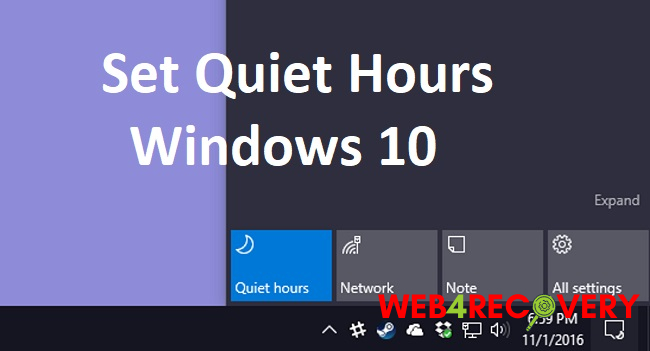In today’s digital world, notifications are a constant presence. Whether they are email alerts, software updates, or calendar reminders, these pop-ups can be distracting, especially when you’re in the middle of focused work or relaxation time.
Thankfully, Windows 10 offers a solution through its ‘Quiet Hours’ feature. This article will guide you through the process of setting ‘Quiet Hours’ for notifications in Windows 10.

1. What are Quiet Hours in Windows 10?
Quiet Hours, known as ‘Focus Assist’ in later updates of Windows 10, is a feature that helps minimize distractions by suppressing notifications during specific times.
By setting ‘Quiet Hours,’ you can choose the hours during which you want to mute notifications, allowing you to focus on your tasks without interruptions.
2. How to Set Quiet Hours for Notifications in Windows 10
Here are the steps to set ‘Quiet Hours’ in your Windows 10 system:
- Click on the ‘Action Center’ icon located on the far-right side of your taskbar.
- At the bottom of the ‘Action Center,’ click on the ‘Expand’ button if your buttons are not already fully displayed.
- Click on the ‘Focus Assist’ button to cycle through the three options: ‘Off,’ ‘Priority Only,’ and ‘Alarms Only.’
To schedule specific quiet hours:
- Click on the ‘Start’ button and select ‘Settings.’
- Choose the ‘System’ option, and then select ‘Focus Assist’ from the list on the left.
- Turn on the ‘Automatic rules’ toggle switch under ‘During these times.’
- Click on the ‘+’ button under ‘Add a time,’ and set the ‘Start time’ and ‘End time’ for your quiet hours.
This action will enable quiet hours during the time frame you have set, and your notifications will be muted during this period.
3. Customizing Your Quiet Hours Settings
Windows 10 offers a variety of customization options for your ‘Quiet Hours’ settings:
- Priority Only: You can set ‘Priority Only’ to allow specific types of notifications during your quiet hours. Click on ‘Customize your priority list’ to select which notifications to prioritize.
- Alarms Only: If you select ‘Alarms Only,’ all notifications except alarms will be muted.
- Automatic Rules: You can set automatic rules based on specific scenarios, such as during a certain time, when duplicating your display, or when playing a game.
In conclusion, the ‘Quiet Hours’ feature in Windows 10 is an excellent tool for managing your notification flow, allowing you to stay focused and productive during important tasks.
By understanding how to set and customize this feature, you can create a digital environment tailored to your needs.

















